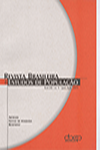Intertemporal differences in averages and distributions of school performance in Brazil: the role of socioeconomic level, 1997-2005
Keywords:
School performance, Socioeconomic level, Counterfactual decompositionAbstract
It is general consensus in the literature on the evaluation of education that the socioeconomic level of students is the most important factor for explaining, at any given moment, the variations in the school performance of students evaluated by the Basic Education Evaluation System (SAEB). It is not known, however, how strongly temporal change in socioeconomic conditions affect changes in averages and distributions of school performance among the several different cycles of the SAEB. To investigate this question we used the method of counter-factual decomposition, developed by Juhn, Murphy and Pierce (1993). This method enables researchers isolate the contribution of the variation in the composition and return of socioeconomic level on the variation in the averages and distributions of school performance. The data used was taken from the Saeb applied in 1997 to 2005 to the cohort of students in the fourth grade of elementary education evaluated in mathematics. The main findings show that the increase in school coverage in the late 1990s lowered the average socioeconomic level of the students, was a factor in the reduction of a rise in inequality in school performance (composition effect). At the same time, there were reductions in the sensitivity of school performance to socioeconomic level (return effect). This result has ambiguous implications. On the one hand, it contributes to a reduction in average school performance and, on the other, helps equalize the distribution of scores between 1997 and 2005.Downloads
Downloads
Published
How to Cite
Issue
Section
License
Papers published in Rebep are original and protected under the Creative Commons attribution-type license (CC-BY). This license allows you to reuse publications in whole or in part for any purpose, free of charge, even for commercial purposes. Any person or institution can copy, distribute or reuse the content, as long as the author and the original source are properly mentioned.

